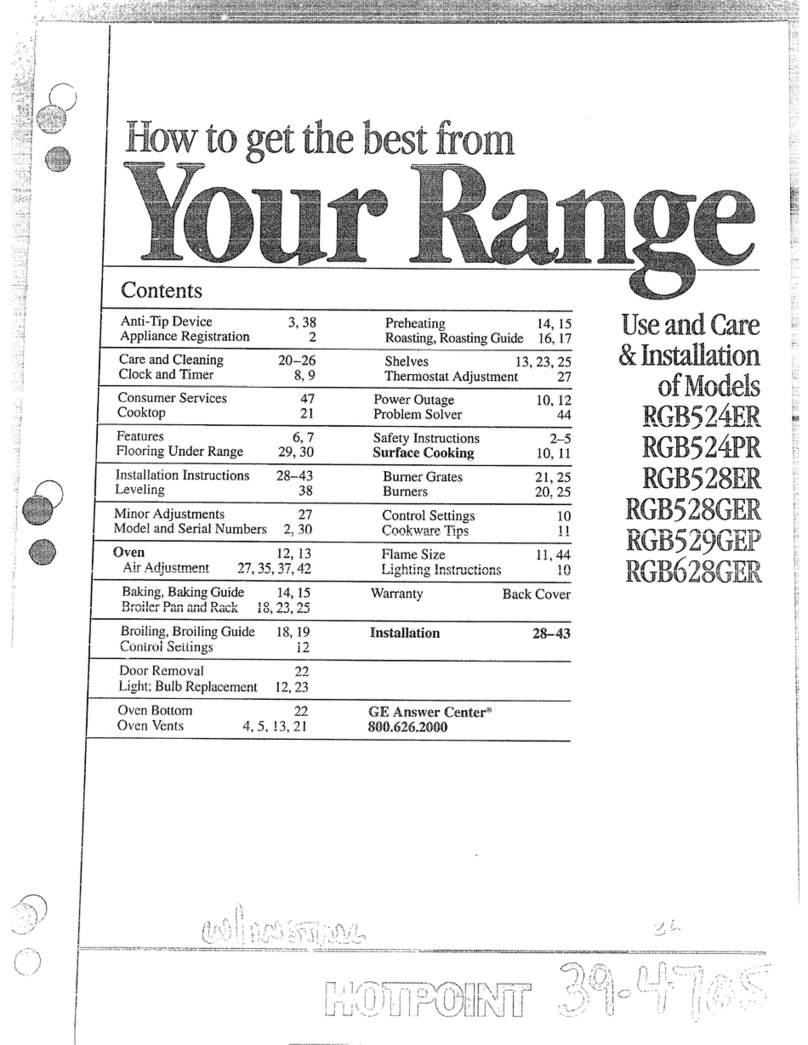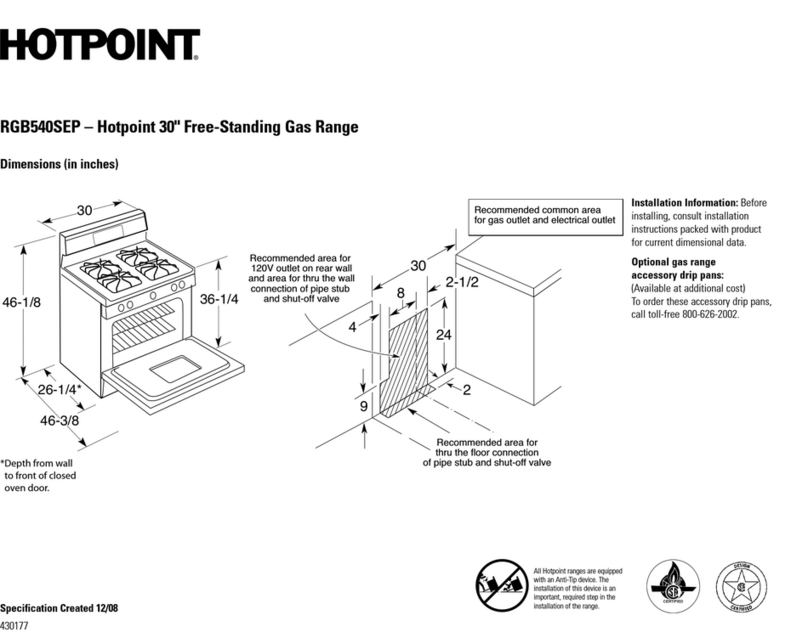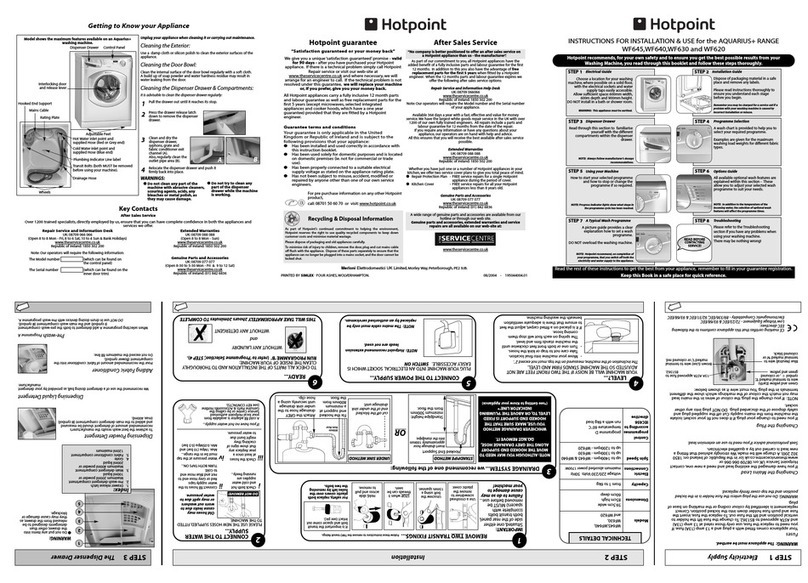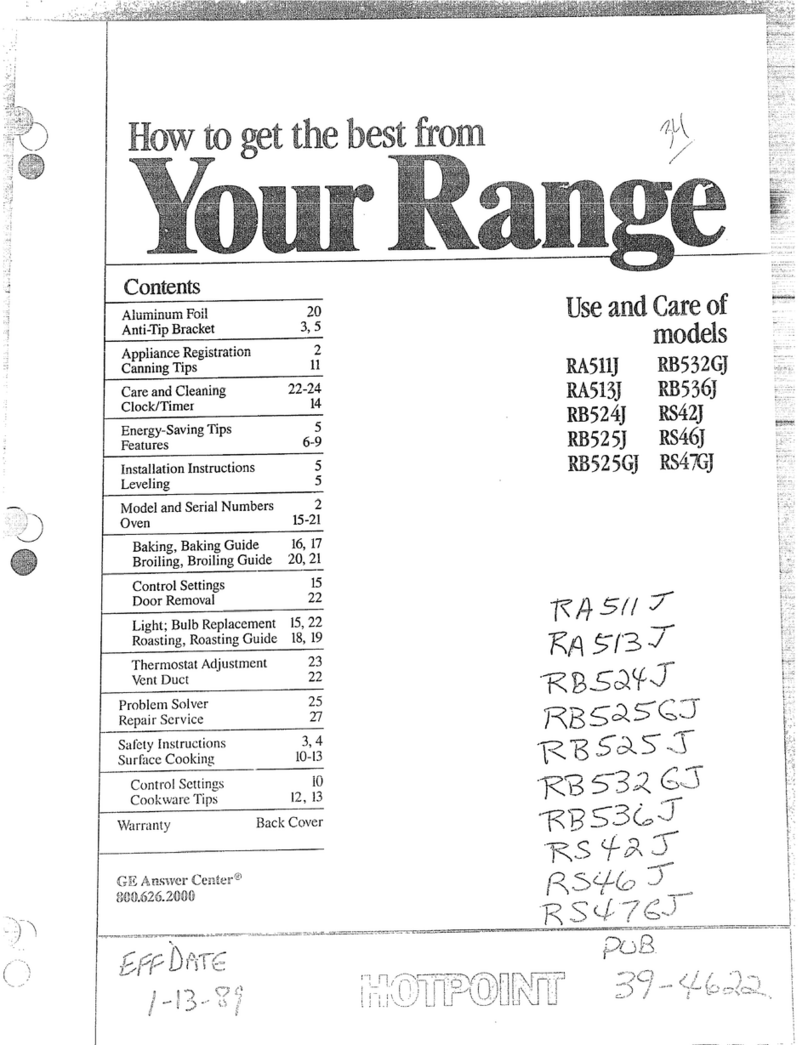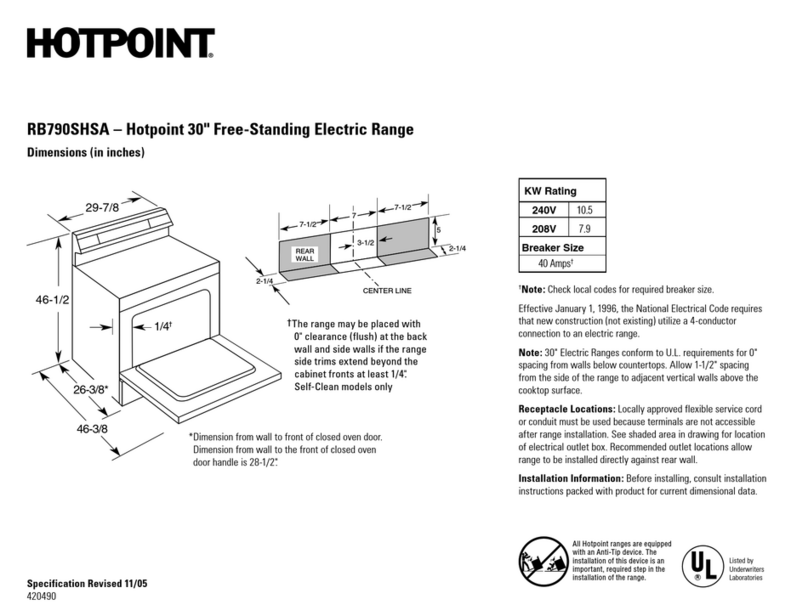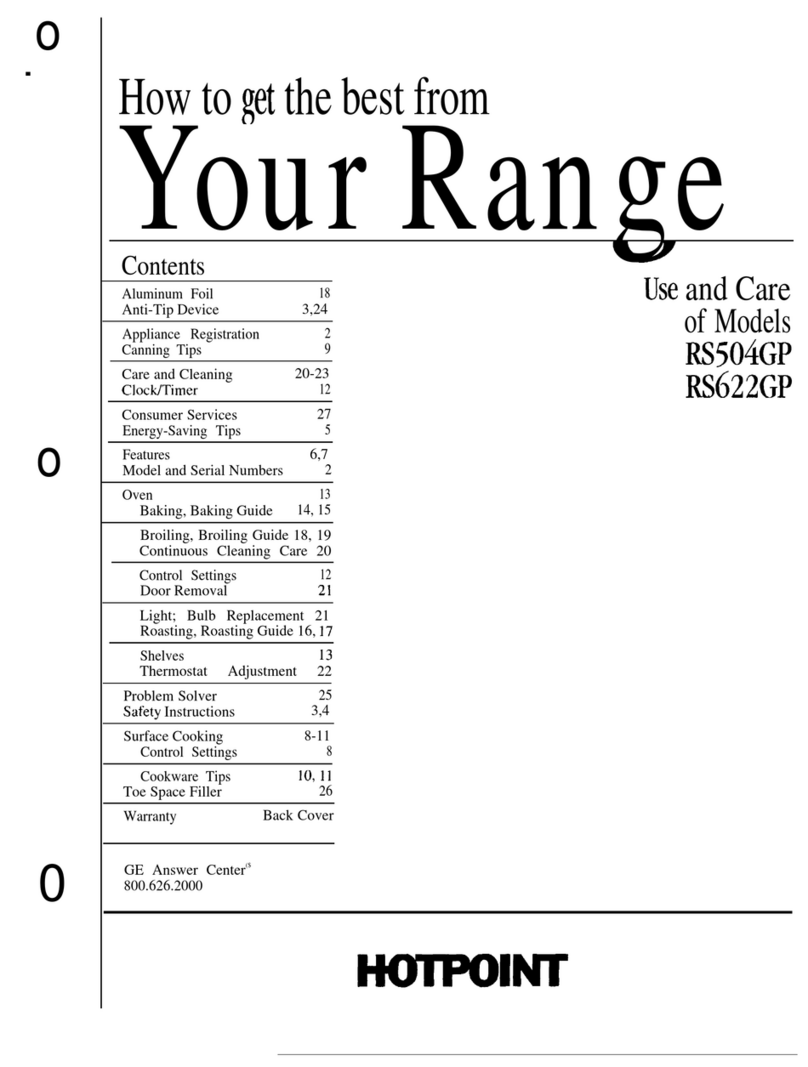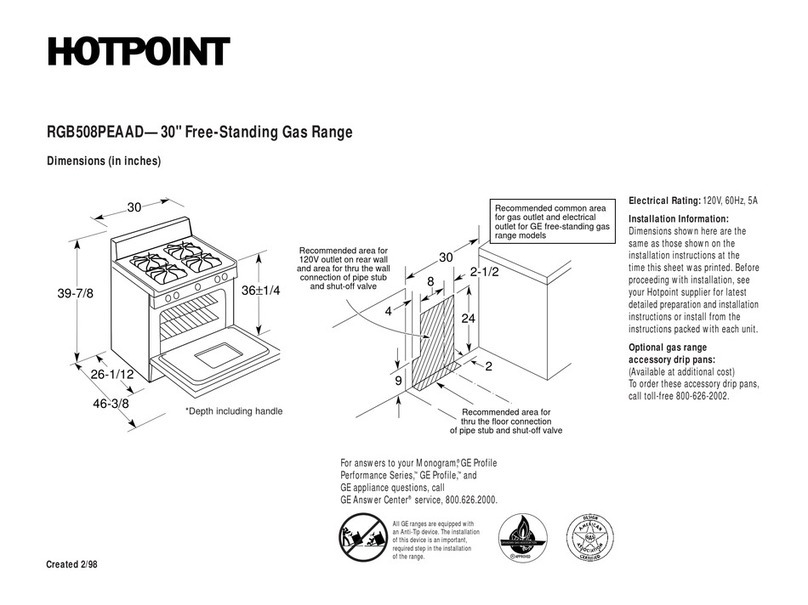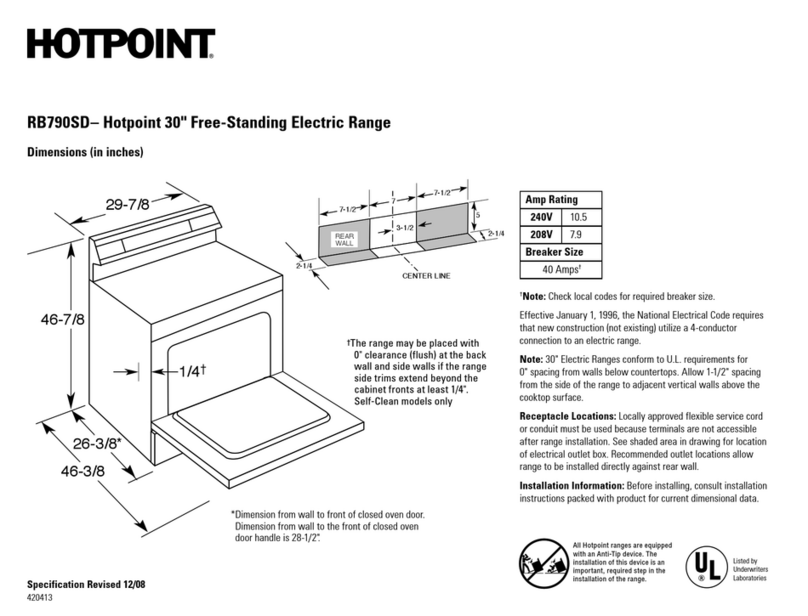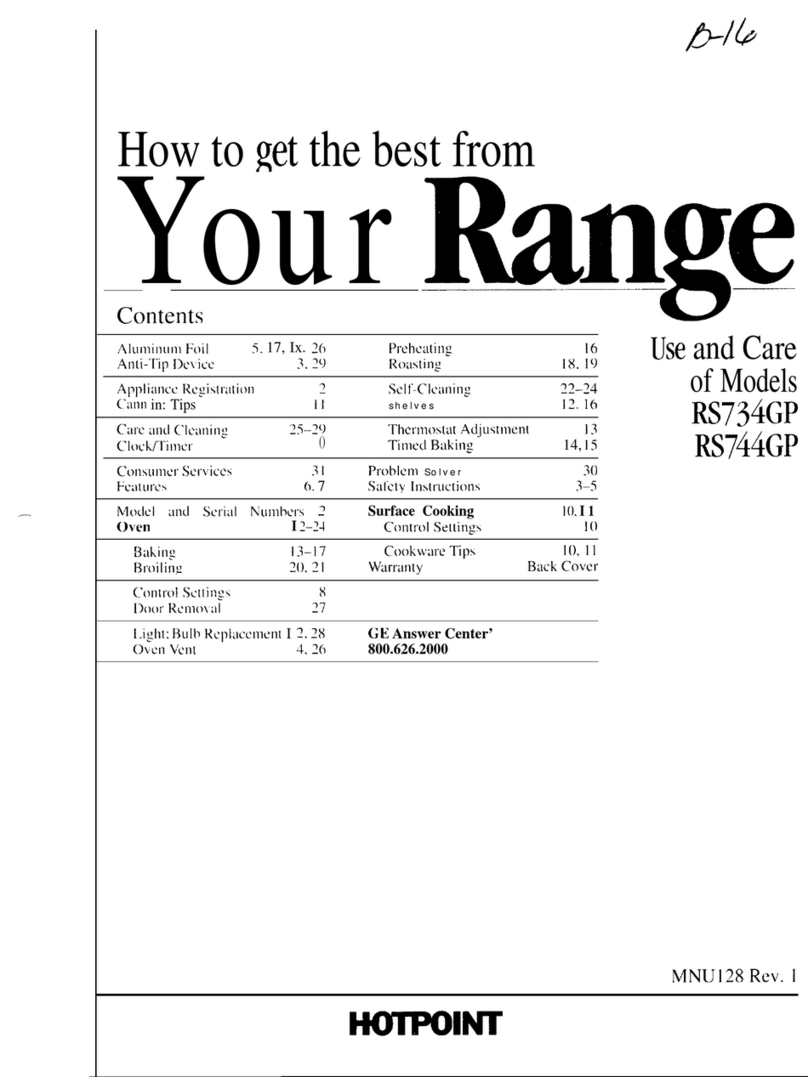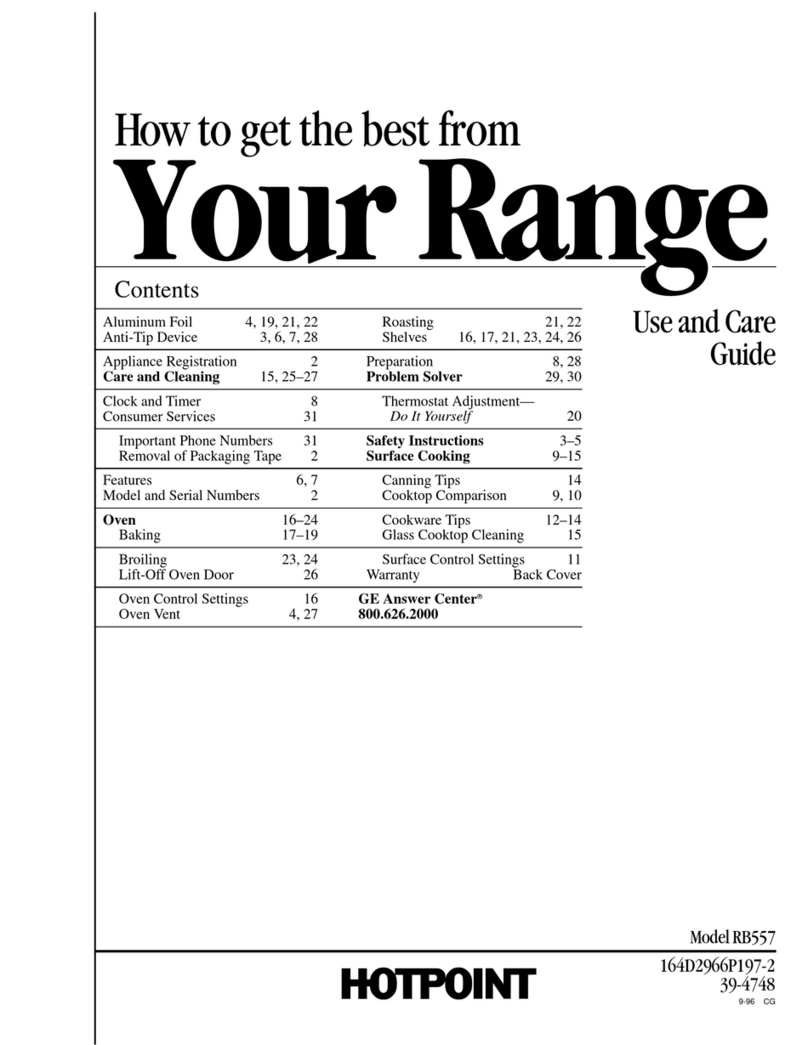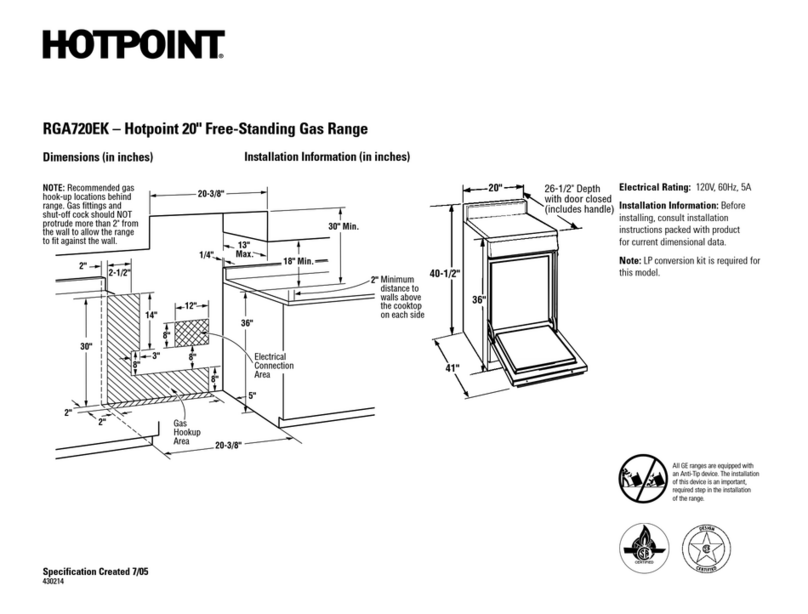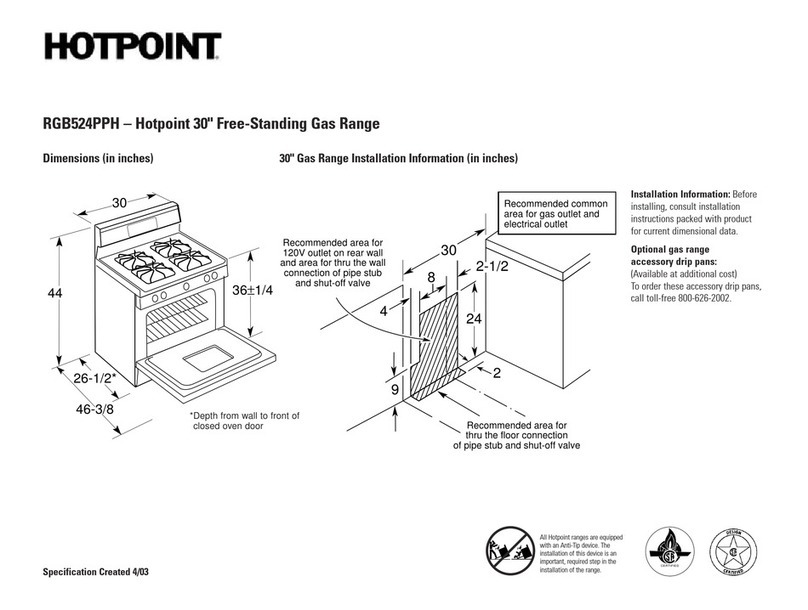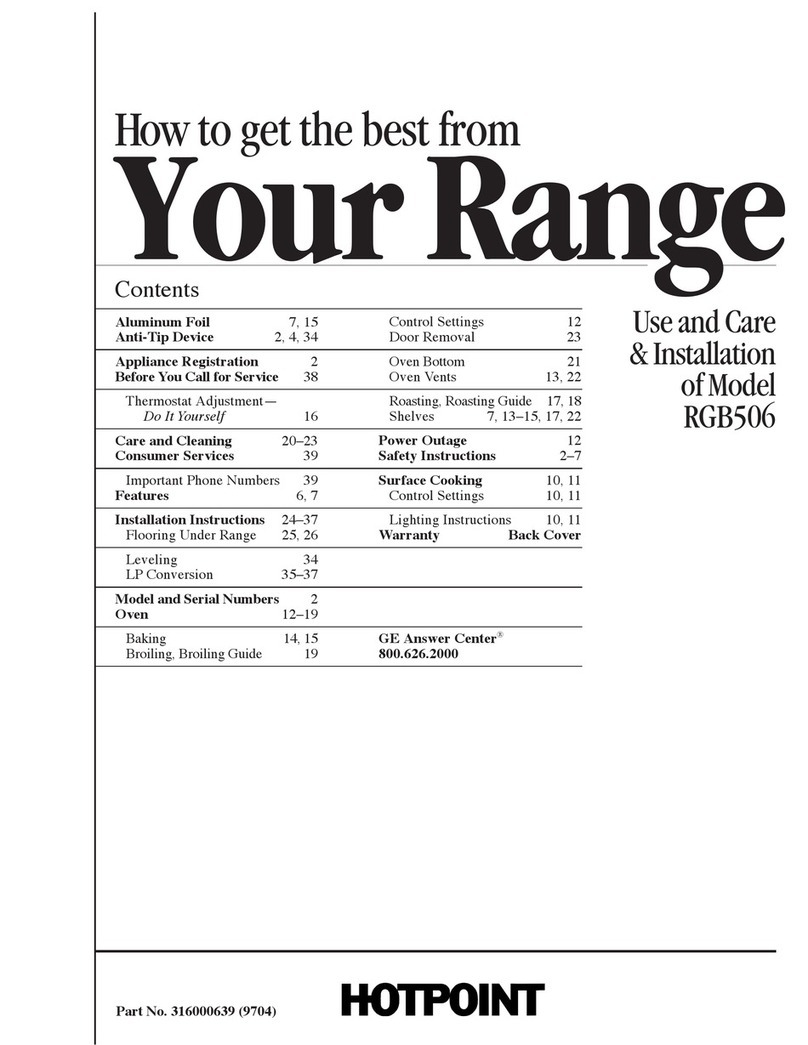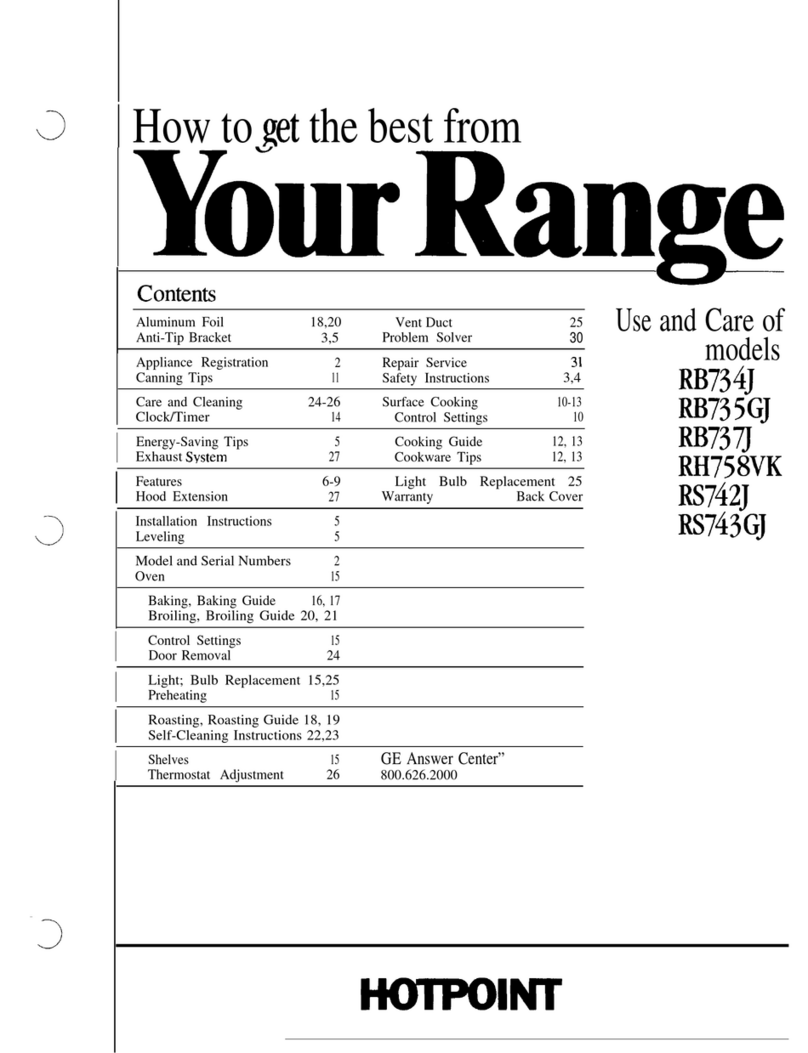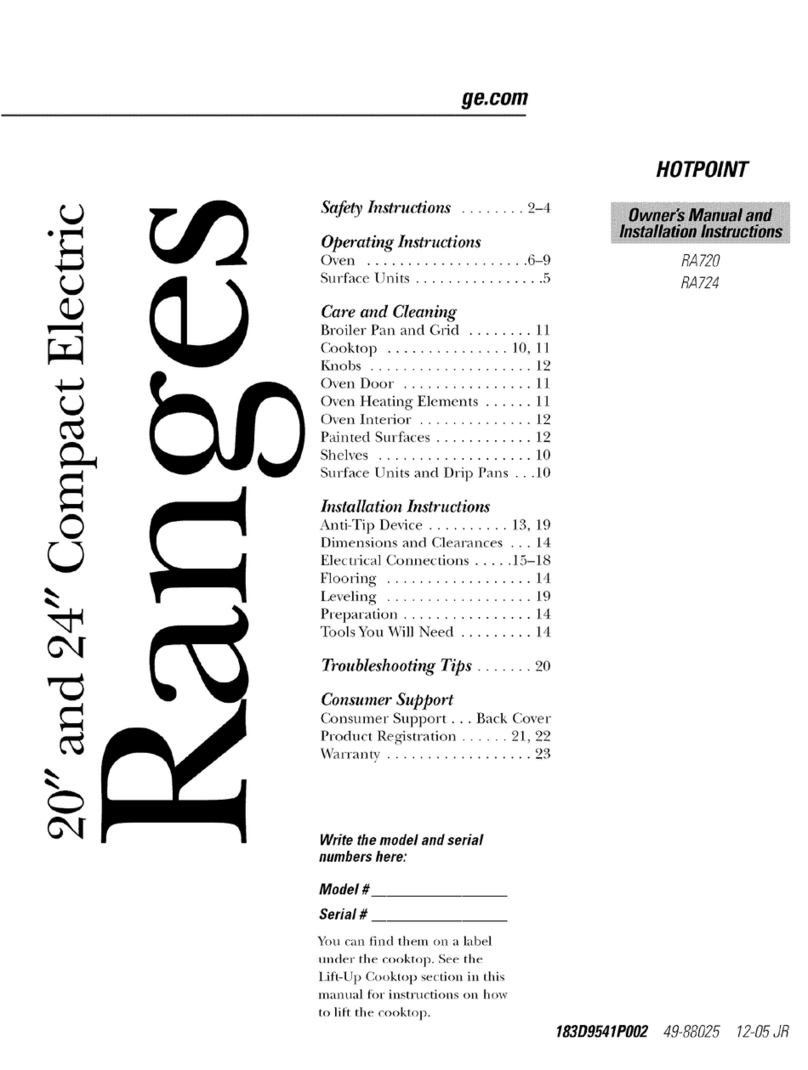
Q. why doesmy Cookwfiretilt
!VhenIplacethelllon thesurface
unit?
A. Becausethe surfaceunitis
notflat. Makesurethatthe “fevc”
orIyourCalrod@unitsare sitting
tightlyinthe rangetop indentation
andthe reflectorringis fiatonthe
rangesurface.
Q. why isthe porcelain finish on
my eQolKwarecoming off?
A. If yousetyourCalrod@unit
higherthanr~uired forthecookware
material, and leaveit, the finish
maysmoke,crack, pop, or burn
dependingon thepotor pan. Also,
atoohighheat for longperiods,
and smallamountsofdry food,
Q. can Iuse specialcooking
equipment? likean oriental Wok$
on any surPdeeunits?
A. Cookwarewithoutflatsurfaces
isnotrecommended.The lifeof
yoursurfaceunitcan beshortened
and therangetopcanbe damaged
fromthehigh heatneededforthis
typeofcooking.
Q. Why am Inotgetti~lgtheheat
Ineedfrom my unitseventhough
Ihavethe knobsonthe right
setting?
A. After turningsurfaceunitoff
and makingsure it is cool, checkto
makesure that yourplug-inunits
are securely fastenedintothe
themanufacturer’sinstructionsand
recipesforpreserving foods.Be
surecanner is ilat-bottomedand
fitsoverthecenterofyourCalrod@
unit. Sincecanninggenerateslarge
amountsofsteam, be carefulto
avoidburns from steamor heat.
Canningshouldonly be doneon
surfaceunits.
Q. CanIcovermy drippansJvith
foil?
A. No. Clean as recommendedin
CleaningGuide. surfaceconnection. maydamagethe finish. -
—
--
—-
~
-----HomeCanning~ps .—-----.-
.
.-
...
4. When canning,use recipesfrom ~.:---
reputablesources. Reliablerecipes ~
are availablefrom the manufacturer . .. . ..
ofyourcanner; manufacturersof :---
glassjars for canning, such as Bali ;.- “”
andKerr; and theUnited States ;‘ _-=_ -
Department ofAgriculture :..-
Extension Service. :..
k“:.t~=
5. Remember, in followingthe 1
~-~.
1
~;q:.::
recipes, that canning isaprocess s‘=
-,.;+=7‘
that generates largeamountsof %-
[..
-.‘
steam. Be careful while canning tO .P~-
!LO)
preventburns from steam or heat. ‘~~:~:
NOTE: If your rangeisbeing ~>-
operated on lowpower (voltage),
canning maytakelonger than ~‘
,.i$~}~
expected, eventhough directions
havebeen carefully followed.The ~
f-“r.q ‘
process may be improvedby:
!
[~*~
(1)using apressure canner, and ,J4-
(2) fof fastestheating of Iafge 1F:fi
water quantities, begin with }(Z
HOT tap water. ,1
~
l-’
I
!“
[
Canning should be done on
CooktopOll]y.
In surface cooking of’foodsother
than canning, the use of1arge-
diameter pots(extendingmore
than l-inchbeyondedgeoftrim ring)
isnotrccon]mended.However,when
canningwith water-bathor pressure
canner, large-diameter potsmay be
Llsed.This isbecause boilingwater
temperatures (even under pressure)
are not harmful to cooktop surfaces
surrounding heating unit.
FiOVJEVER,DO NOT USE
LARGE DIAMETER CANNERS
OR OTHER LARGE DIAMETE1?
P{TS FOR FRI’ING OR BOILING
FClODS~IflER THAN ‘WATER.
N!ostsyrupor sauce mixtures-
;lr]dall typesof fiyillg-c{~okat
temperaturesmuch higherthan
boilingwater.Such ~ernperat~]Yes
couldeventuallyharm cookiop
s~Irfi3cess~trroufidii?,gheatingunits.
1. Bringwaterto boilon HIGH
heat, thenafterboilinghas begun,
adjustheatto lowestsettingto
maintainboil(savesenergyandbest
usessurfaceunit.)
2. Besurecanner fitsovercenterof
surfaceunit.If yourrangedoesnot
allowcanner to be centeredon
surfaceunit, use smaller-diameter
potsforgood canningresults.
3. Flat-bottomedcannersgivebest
canningresults.Be surebottomof
canner is flator slightindentation
fitssnuglyoversurfaceunit.
Cannerswith flangedor rippled
bottoms(often foundin enamelware)
are ncltrecommended.
-.
i,\___
>...,,..>..—.—..- .——------ .
... ..——-—... ——..
